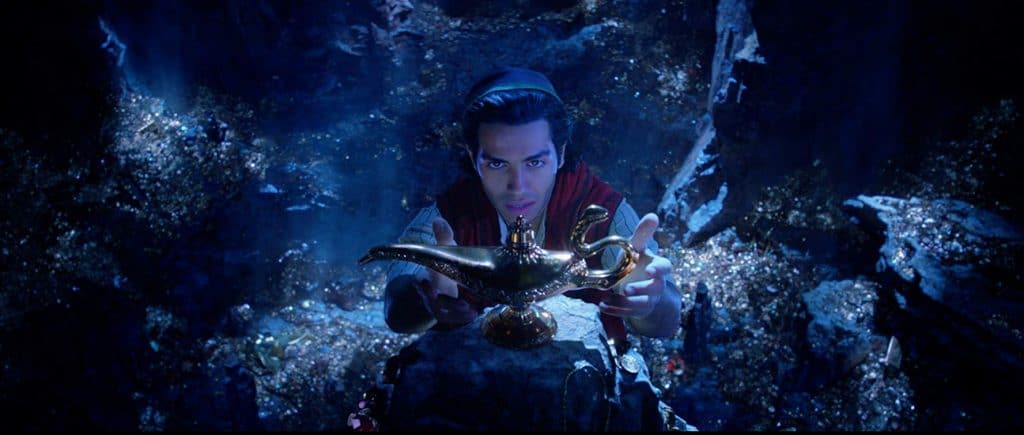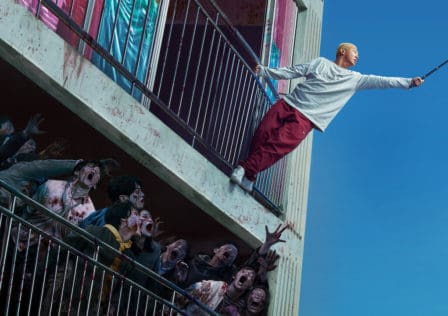Sometime around the first cymbal clashes for the “Prince Ali” number, I knew I was in trouble. There was a grin on my face. Again, I’ve been proven to be a sucker for extravagant musical numbers, the more explosion of colours and dances and Howard Ashman’s lyrics the better. The 2019 remake of Aladdin had all these bursting out like the confetti from Will Smith/Genie’s humongous turban, and it was enough to get me on the magic carpet ride despite the film’s glaring issues in my face.
For example, even until after the credits rolled, I still couldn’t shake the thought that this movie rehashes the 1992 Disney animation gem for no apparent reason other than milking US$207 million (and counting). The musical sequences and comedy affirmed what I had known to be true – reality, even a CG-infused one, is just a yawn compared to what well-made animation can achieve.
Even the song “Prince Ali”, for all its razzmatazz conjured with 2019’s special effects, lacks the electrifying energy of the entourage led by Robin Williams’ Genie in 1992 – speeding up the Will Smith version on YouTube by 1.25 times puts it closer to the song we know and love in the animated feature (thanks for the tip, Internet).
In other words, the live-action remake of Aladdin is a reminder of how much better things look in traditional animation.
But the 1992 Aladdin is far from perfect. For those who did not loop the movie like I did as a kid, here’s the low-down: in the fictional city of Agrabah, petty thief Aladdin was tasked by the evil Grand Vizier Jafar to retrieve a magic lamp. As with the common fate of freelancers, Aladdin gets screwed over by his ‘client’, and keeps the lamp for himself. He rubs the lamp, and out pops a powerful genie who grants him three wishes.
With his newfound bestie and – let’s face it – slave, Aladdin uses one of his wishes to transform into a prince so that he can ask for the hand of his crush, Princess Jasmine. He manages to fool everyone at the palace but Jafar, who proceeds to commit all manner of villainy to get rid of the fake prince and seize Genie to do his biddings. Cue cackles, comedy and a happy ever-after.
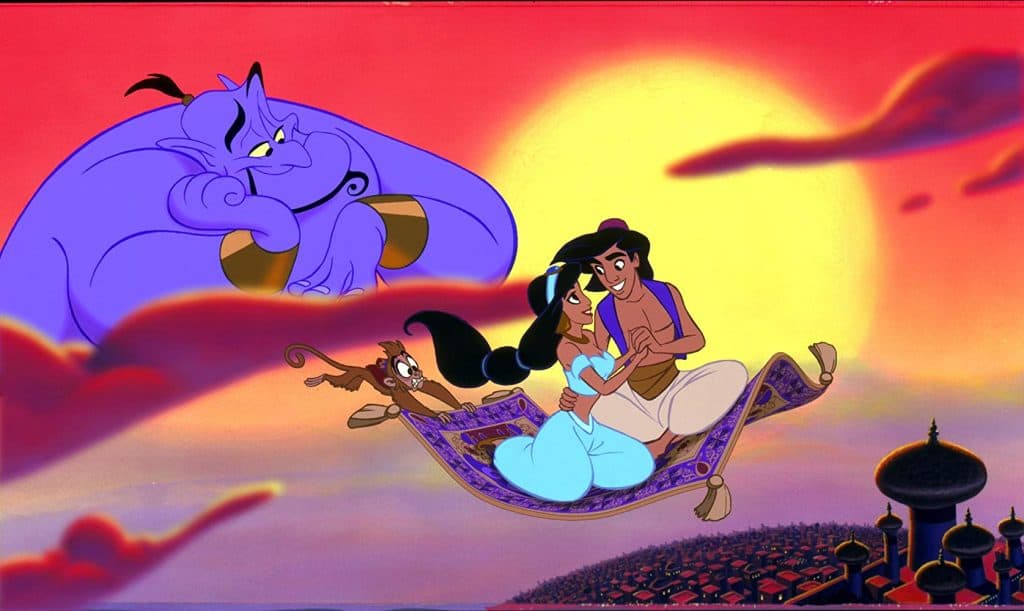
Happiness in unrealistic proportions
Like many Disney products of its time, the original Aladdin could not stand up to scrutiny. For a movie set in the Middle East, characters were voiced by a predominantly-white cast, and most were either exoticised or caricatured. The setting of Arabia was reduced to mere background and jokes rather than woven into the story. Beyond the packaging, there was very little in terms of how Arabic culture works. The film further gained controversy for peddling racism and stereotypes.
But damn, the animation was a feast of fluidity, the musical numbers (written by the power couple Alan Menken and Howard Ashman, with Tim Rice joining later) were hilarious and heartfelt earworms, and it’s hard to not fall in love with the cheeky (and chesty) Aladdin, motor-mouthed Genie, rebellious and quick-witted Jasmine, and, of course, the diabolical scenery-chewer Jafar.
So, director Guy Ritchie has a lot to juggle in remaking the beloved classic. The 2019 movie has to ride on the nostalgia of what made Aladdin an enduring hit while fixing its misses. So much room to work with, so much room to botch it.
I did not expect Ritchie to pull it off. His work has been, to me, more focused on style than substance. Trailers of Aladdin did not convince me otherwise – the cast seemed expressionless (other than Will Smith, who is acting as Will Smith), the jokes fell flat, and the sets were lavishly hollow in the shade of Generally Middle East.
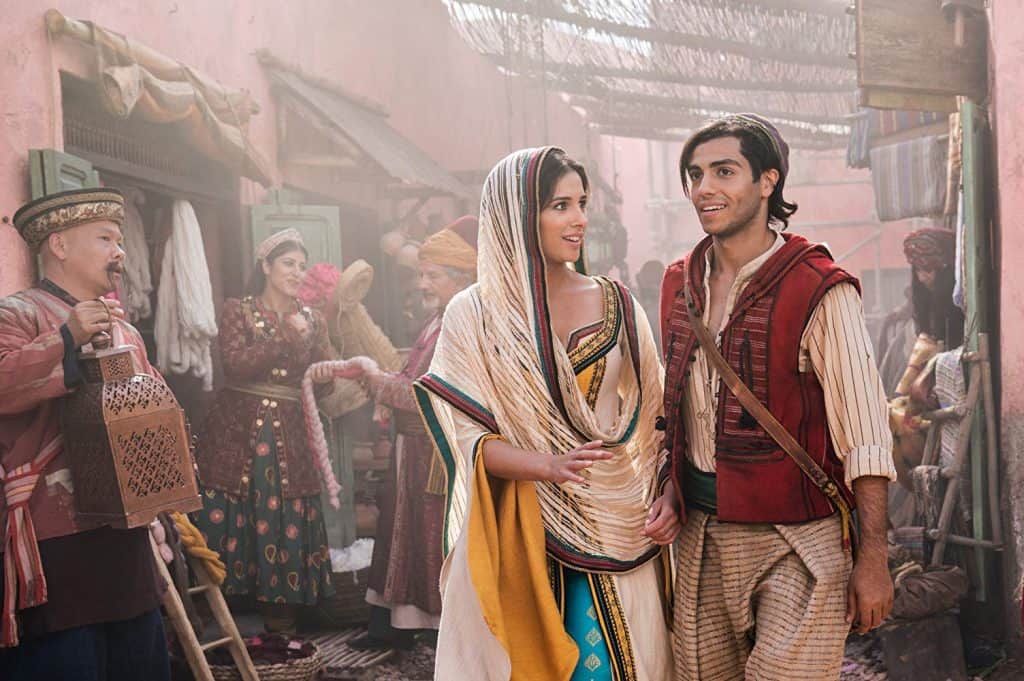
Right out of a ‘Visit Agrabah’ brochure
The movie did surprise me. Sure, I miss the wild imaginations best brought out by silky smooth 2D animation, Robin Williams’ ad-libbing Genie, and that heart-thumping escape sequence from the fiery Cave of Wonder. But Ritchie’s Aladdin makes up for it with more grounded storytelling.
Gone is the bumbling Sultan who seemed to have stopped growing at seven years old. The new ruler (Navid Negahban) is shown to be measured and commanding – traits which suffocate his ambitious Grand Vizier, Jafar (Marwan Kenzari). The villain is no longer moustache-twirling and evil for evil’s sake, but had a power-hunger fueled by actual hunger – like Aladdin, he came from poverty. Jafar’s parrot, Iago, is no longer the annoying talkative lackey, but a competent pet spy that gets a pretty impressive action scene of its own.
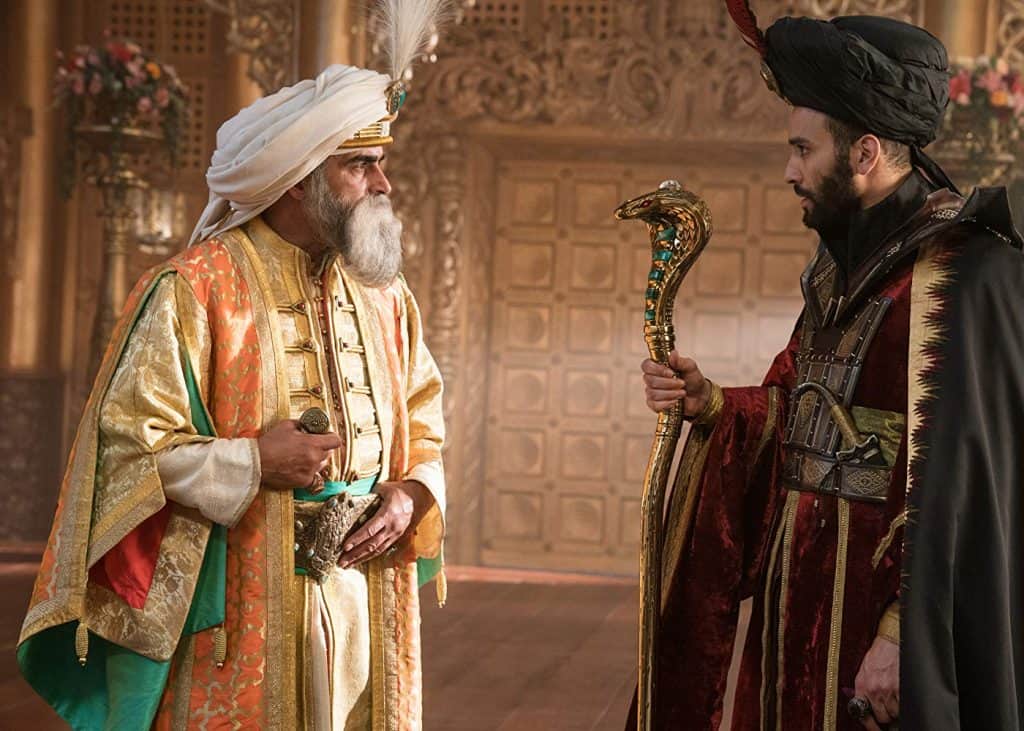
The Sultan and his Grand Vizier are finally eye-to-eye. In a way.
Of course, the diverse cast from Egyptian to Iranian to African-American this time is a welcomed update – though there were reports of Disney “browning-up” white actors. There are also attempts to remedy the original’s stereotypes, but not by much. You don’t have to comb the desert to find the same swooning ladies over Aladdin and the broad strokes of exoticism that Fast Company’s Samir Abady calls “pseudo-Arabia”.
The basics are in place, though. Aladdin, played by Mena Massoud, retains the street-smart and lithe charm of the titular thief with great comedic timing. Will Smith, as Genie, manages to shake off the weight of Robin Williams’ legacy and give the character his own, Hitch-ish spin. Together, the duo shares believable chemistry, allowing Ritchie room for what he does best – BFF banters.
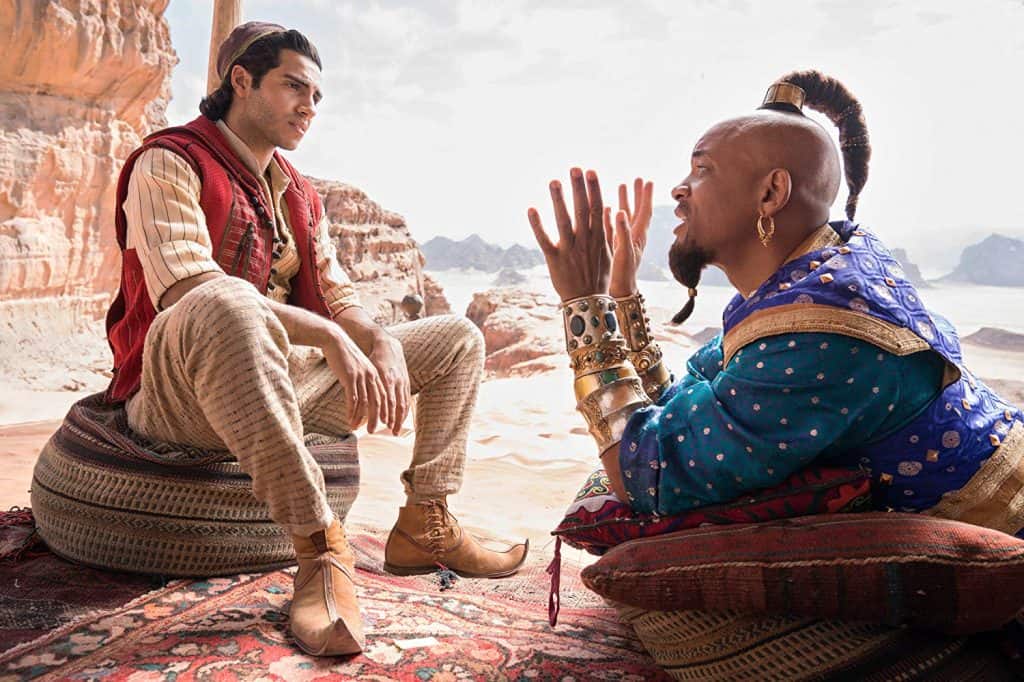
The dating coach and his client
Princess Jasmine, however, is the real whole-new-world here. Naomi Scott played the rebellious royalty with a glint in her eyes. While the original princess in the animated feature has little going for her beyond doe-eyed determination and a vague desire to be free, Scott’s Jasmine has her sights on the throne. Her main frustration is not only that she is being married off as a pawn for political alliances, but also that she could not be Sultan despite being qualified for the job. This makes her a more worthwhile character to root for compared to a love-struck protagonist.

The (former) Pink Ranger is still a fighter
But this is only a side plot. The main star of the show is still Aladdin, and the main story still follows the original animation like a loyal pet monkey. This is a waste, because a fleshed-out plot of Jasmine fighting patriarchy would have been more relevant for this day and age than a rehashed tale – to quote fellow DeconReconian JY Tan, “if Disney had been braver, they could have focused on her story and called the movie Jasmine instead.”
Alas, punches were pulled. Instead of opening our eyes to a new fantastic point of view, the 2019 Aladdin cruised on a tried-and-tested path – sometimes to the point of imitating the animated scenes blow-by-blow.
The live-action film is not bad or boring; there are changes and charm. But the remake fails to make a case on why it was necessary at all. Sure, I grinned in the cinema, but the feel-good chemicals dissipated as the lights came back on – when I realised that the movie could have progressed, but didn’t budge much.
Also published on Medium.

writes about pop culture with the suspicion that it is actually writing her.
